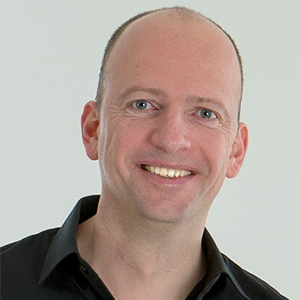Q: Jovan, EIT ICT Labs describes itself as one of the first Knowledge and Innovation Communities set up by the European Institute of Innovation and Technology as an initiative of the EU. For folks who may not be familiar with EIT ICT Labs, what does that mean exactly? What is it that you do?
Jovan Golic: EIT ICT Labs is one of the three Knowledge Innovation Communities (KIC) set up by the European Institute of Innovation & Technology (EIT). It became operational in 2010 with the aim of bringing research results stemming from European projects to the market to create innovation. The KICs are funded by the EIT with a budget that has increased over the years and that, in 2014, resulted in over 70M€ for EIT ICT Labs. This funding goes along with a co-funding from participating members that, in the case of EIT ICT Labs, is mobilizing three times as much in 2014 for a total investment in the order of 300M€.
The goal of increasing European competitiveness through innovation is pursued along three directions that are mutually reinforcing:
- Invest in education with Masters and Doctoral programs to prepare the entrepreneurs of the future. Today there are close to 500 students involved in the program.
- Invest in applied research to complement the one carried out in the European Co-operative Programmes (now clustered in the Horizon 2020 of which EIT is part) with a focus on eight areas of which privacy, security, and trust is one.
- Invest in the development of SMEs to help them in the adoption of ICT to ensure their competitiveness and their support of start-ups, coaching them with the help of a Business Development Accelerator providing services and access to markets and funding.
EIT ICT Labs is present in nine European countries and has just opened up a hub in San Francisco. Additionally, it connects with all European countries through the X-Europe Programme to connect and leverage all excellence areas in the European Union.
Its over 100 partners in these first five years of the initiative have been able to work together on focused projects delivering products and services to the market, and extending the national reach of some of them to a European dimension. Over 500 SMEs and start-ups are part of its ecosystem ensuring a pervasive presence in the ICT innovation arena.
Q: Just last month you opened a new center in Silicon Valley, which is a long way from your other centers in Europe. What does this new location hope to accomplish?
Golic: On Sept. 25, after a year-long preparation involving contacts with companies, universities, and VCs in the Silicon Valley, EIT ICT Labs opened a hub in San Francisco to create a bi-directional bridge for European entrepreneurs and companies that may find in the Silicon Valley ecosystem an opportunity to access technology, funds, and markets, and for Silicon Valley's VCs and innovative technologies to find a connection to the European market made more accessible through the EIT ICT Labs network.
Focused cooperation activities are already planned and will be at full steam early next year in areas like software-defined network and networking, and urban life and mobility with specific attention to use of crowdsourced territorial data. Furthermore, strong cooperation on education MOOCs involving major players like Coursera are being defined. An extensive program for start-ups support is also in place with scheduled events for pitch and fund seeking.
Q: Tell me about how you will be participating in Black Hat Europe. What can visitors to the conference expect to see and hear from EIT ICT Labs? What will be the takeaways?
Golic: We wish to convey a message about the role, strategy, and priorities of EIT ICT Labs in the area of cyber security and privacy. At the EIT ICT Labs booth, visitors will see innovative cyber security services of the Communication Valley Reply that were brought to the market with support of the European innovation community. We will demonstrate how the Privacy, Security & Trust Action Line (PST AL) of EIT ICT Labs provides financial and operational support for innovation and business activities aimed at bringing to market innovative ICT products and services in the area of data security and privacy.
The technological solutions presented at Black Hat Europe are in line with the long-term priorities of the EIT ICT Labs PST AL, which are privacy-aware federated ID management and strong authentication; data privacy in online/mobile applications, services, and communications; and protection against malicious software and intrusion detection/prevention on computing devices, especially on mobile platforms.
These priorities are based on the following premises:
- The current situation in cyber security is unsatisfactory. Namely, the attacks are evolving and multiplying, and their negative impact is a threat that may endanger the growth of ICT business worldwide. Exposure of sensitive data (personal, industrial secrets, etc.) puts at risk people's liberty, jobs, and even lives, as well as property and enterprises. Due to the scale of the problem, the development of efficient defenses by a reactive approach heavily based on human effort may soon become unrealistic and too costly.
- The current situation in data privacy is very unsatisfactory. One of the main problems is massive user profiling by online service providers which, although being potentially useful, is out of effective control of the users. Another problem is (potential) abuses of surveillance and lawful interception practices which themselves help detect and monitor social threats and criminal or terrorist activities.
Therefore, the PST AL is pushing forward a proactive approach -- that is, address cyber security and privacy by using more secure, trustworthy, and transparent innovative technologies bridging the gaps between available techniques and practice by promoting a "security and privacy by design" paradigm, and by raising social awareness. Application areas such as social networks, e-commerce, e-voting/polls, e-health, smart spaces, smart energy, and mobility, as well as cloud computing, Big Data, and Internet of Things are strongly encouraged.
Q: EIT ICT Labs is a "Platinum Sponsor" of Black Hat Europe 2014. Why is this particular conference such an important part of your marketing program?
Golic: Black Hat Europe is a premium forum for cyber security which attracts an influential audience both from the academic world and industry and both from public and private sectors. The needs for data protection are strong and business opportunities in the area of cyber security and privacy are great and unexploited. A major objective of EIT ICT Labs is to create a community of start-ups, SMEs, and enterprises that are interested in developing and deploying innovative solutions in data security and privacy, thus fostering economic growth and improving quality of life in Europe and worldwide. Being a "Platinum Sponsor" of Black Hat Europe is expected to help us reach that objective.








